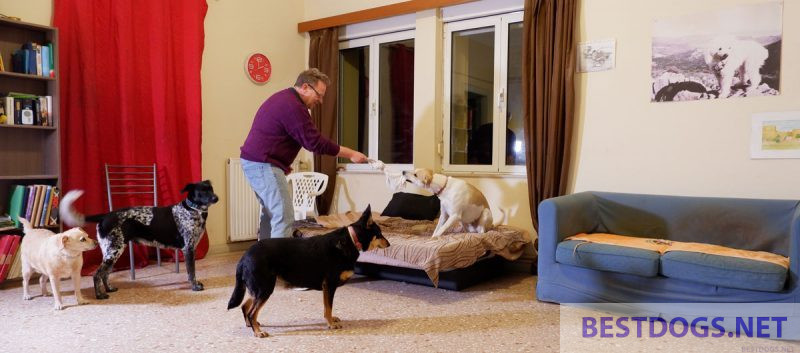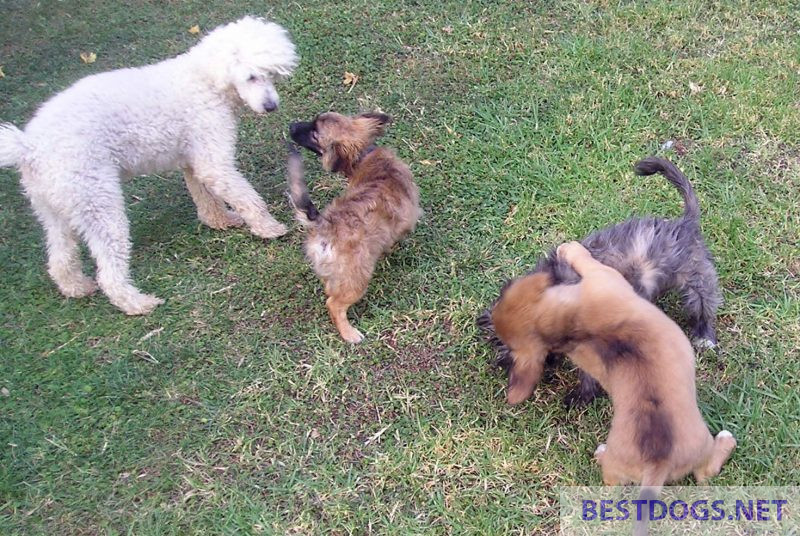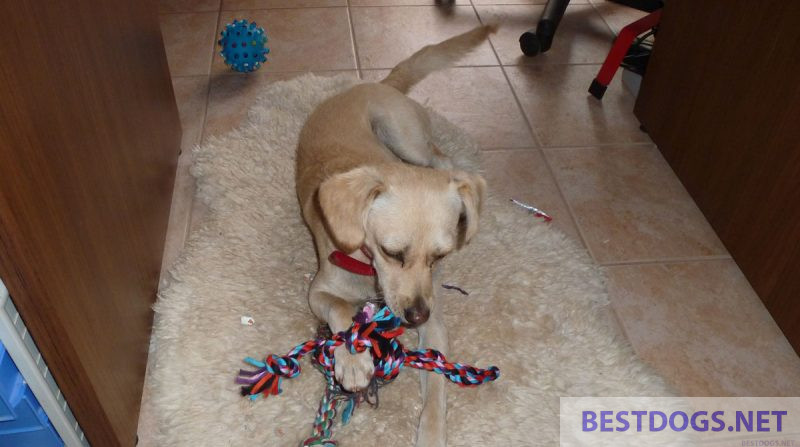Taking a Dog in the Car: Essential Tips for Safe and Comfortable Travel.
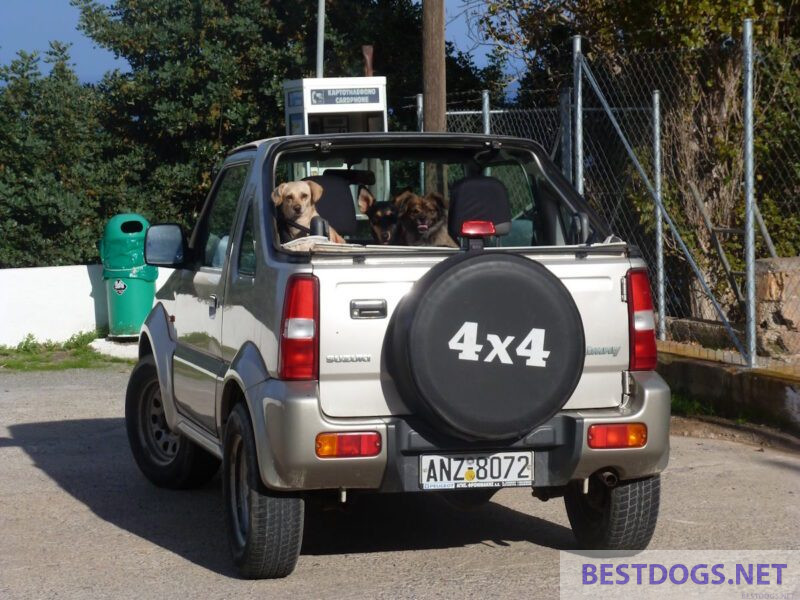
Driving safely with your dog in the car
Table of Contents
Traveling with dogs can be a delightful experience, offering opportunities for pet owners to explore new destinations with their canine companions.
However, it’s important that you ensure your furry friend’s safety and comfort while traveling. Whether you’re going on a road trip or just running errands, here are some helpful tips for traveling with your dog in the car.
This requires careful planning and consideration for the animal’s comfort and safety.
Dogs, unlike humans, have different needs and thresholds when it comes to car travel. Ensuring that a dog is well-prepared for the journey makes the trip enjoyable for both the pet and owner.
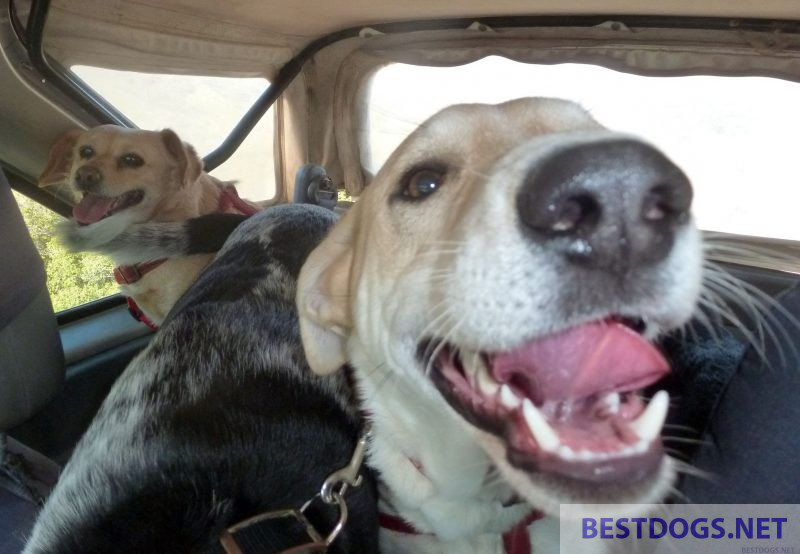
Cars have become an integral part of everyday life and most puppies come into contact with them as soon as they are picked up.
The adult dog should enjoy the view or take a nap during the car journey, because anything else could be dangerous. Causing an accident because you have to restrain your four-legged companion while driving is the worst thing that could happen!
To this end, the dog should be accustomed to the car from an early age, preferably as a puppy. He should be able to walk around the car and sniff it. The tailgate and doors should be opened so that he can jump into the car and explore it from the inside.
The dog would even prefer to go shopping in the car rather than having to stay at home alone, even if it is then cramped in the vehicle or he can no longer really enjoy the view!
For successful car travel with a dog, it’s important to select an appropriate crate or carrier, introduce the dog to the vehicle in a positive way, and maintain a comfortable environment throughout the drive.
A secure crate allows the dog space to sit, stand, and turn around, while also protecting them in the event of sudden stops.
Introducing the dog to the crate or car space before the journey helps to minimize stress and anxiety.
Hydration and ventilation are other key aspects that should not be overlooked when traveling with your dog.
Providing access to fresh water and keeping the car well-ventilated ensures that the dog remains comfortable and reduces the risk of carsickness.
Preparing for the Car Journey
Making sure your dog is comfortable and safe during car travel involves training, verifying their health and safety, and packing all the essentials for the journey.
Especially with rescue dogs that have never traveled in a car before, you have to be prepared for some unpleasant surprises at the beginning that being locked up in a vehicle means for the animal.
Training and Acclimatization
To ensure a smooth trip, training your dog to be comfortable in a car is crucial.
Begin with short, frequent rides and gradually increase the duration. This helps the dog associate the car with positive experiences.
Introduce your dog to the car at a slow pace, using treats and praise to create a stress-free environment.
Health and Safety Checks
Before embarking on any trip, schedule a visit to the veterinarian to confirm that all vaccinations are up to date and that your dog is fit for travel.
Carry up-to-date health records, ensure the microchip information is current, and that the ID tag has your contact information.
A dog first aid kit should be readily accessible in case of emergencies, and make sure your dog’s harness or collar is secured with a leash for safe exits during stops.
Before you set off on a long car journey, you should take your dog for a walk or offer him some physical activity. This will help him to burn off excess energy and make him more relaxed during the car journey.
Packing Essentials
Prepare a checklist for your dog’s travel essentials:
- Food and Water: Pack enough dog food for the journey and a portable water bowl.
- Maintain your dog’s regular feeding schedule; giving a light meal 3 to 4 hours before the trip might prevent stomach upset.
- Comfort Items: Include your dog’s favorite toys to keep them occupied and comforted.
- Restraint System: A dog crate, car seat, or seatbelts designed for dogs are vital for preventing injury in case of a sudden stop.
Securing Your Dog in the Vehicle
Ensuring your pet’s safety during car travel is essential for preventing injuries in case of sudden stops or accidents.
Proper restraint not only secures your dog but also eliminates distractions while driving, which can be critical to the safety of all passengers.
Restraint Options
There are multiple options to keep your dog restrained in a vehicle, each with its own benefits:
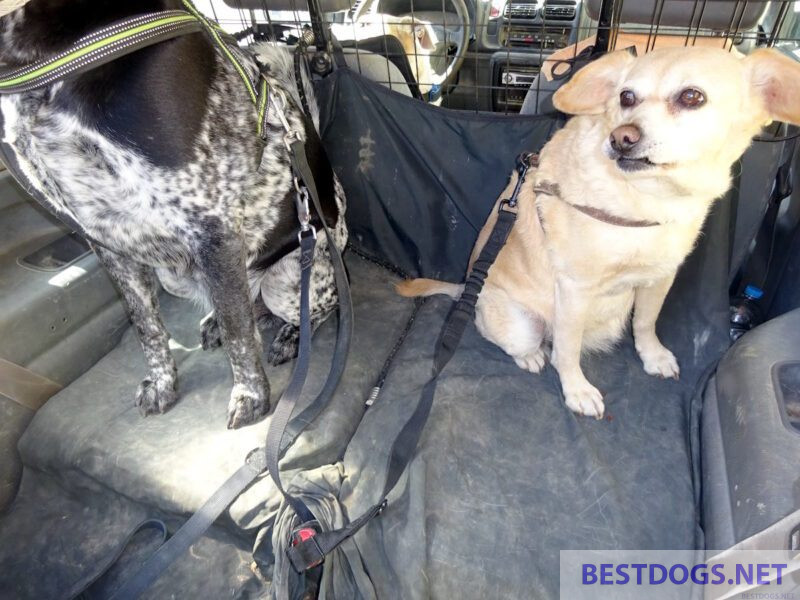
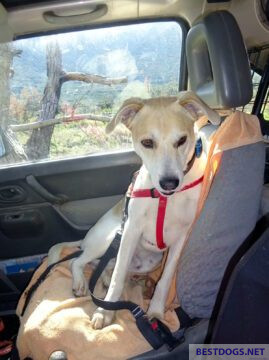
- Dog Seat Belts: A dog seat belt [*Ad] utilizes a harness to secure your dog to the car’s seat belt system. These should always attach to a harness and not a collar to avoid neck injuries.
- Crates: A sturdy dog crate provides a secure space for your dog and can protect them in the event of an accident. Ensure the crate is properly anchored in the vehicle.
If possible, a crate should be avoided, as the dog will not necessarily like being transported from one place to another like a piece of luggage. It also interferes with the dog’s healthy visual development if he cannot see anything interesting during the journey and cannot gain any experience. - Car Seats for Dogs: Smaller dogs may benefit from a car seat designed for pets, which raises them for a view out the window and keeps them secure.
Regardless of the type of restraint or barrier you choose, it is important to secure it properly in the car.
Follow the manufacturer’s instructions for installation and make sure that the restraint or barrier is securely fastened and cannot come loose while driving. Check the restraints regularly for signs of wear or damage and replace them if necessary.
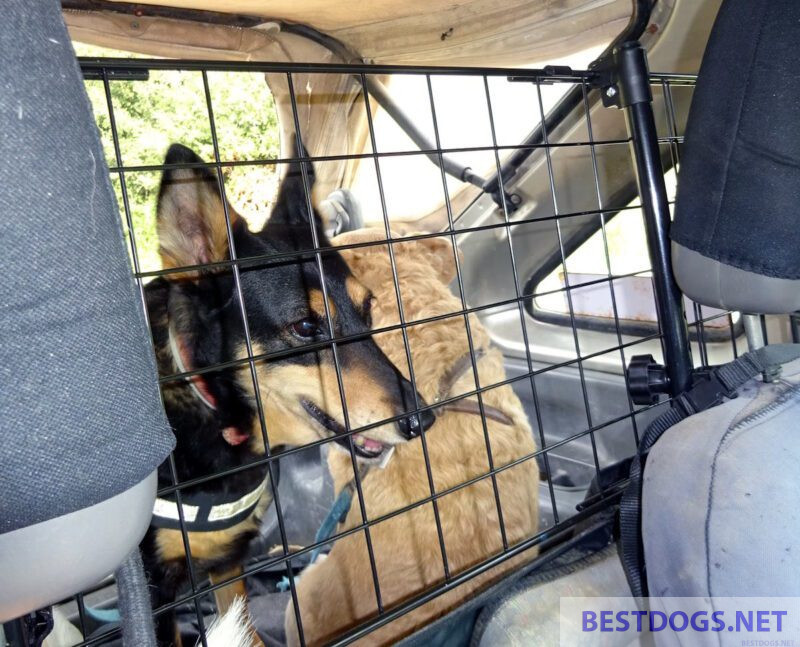
Remember that the use of harnesses or dog barrier [*Ad] is not only important for your dog’s safety, but also for your own safety. Unrestrained dogs can distract drivers and lead to accidents or injuries. By using appropriate restraints or barriers, you can ensure a safe and enjoyable ride for you and your furry companion.
Maintaining Comfort and Safety
Creating a comfortable environment for your pet is crucial, particularly on longer journeys:
- Ventilation: Ensure proper ventilation and temperature control within the vehicle to prevent overheating or discomfort.
- View: Allowing dogs to see out of windows can reduce anxiety and help with carsickness.
- Familiarity: Introduce your dog to the restraint method before traveling to reduce stress.
- Microchipping: Consider microchipping your pet for safety travel, to aid in recovery should they escape during a trip.
During the Journey
When traveling with a dog in a car, maintaining routine care in terms of food, water, and bathroom needs is crucial, as is ensuring your dog’s comfort to prevent anxiety and carsickness.
Managing Food and Water
It’s important to manage your dog’s feeding carefully during car trips.
Provide a light snack a couple of hours before the journey to prevent an empty stomach, which may help deter carsickness.
For hydration, carrying a travel-sized water bowl and offering water at each stop ensures that your dog stays well-hydrated without disrupting their normal drinking patterns.
- Food: Small, bland snacks
- Water: Accessible and offered regularly
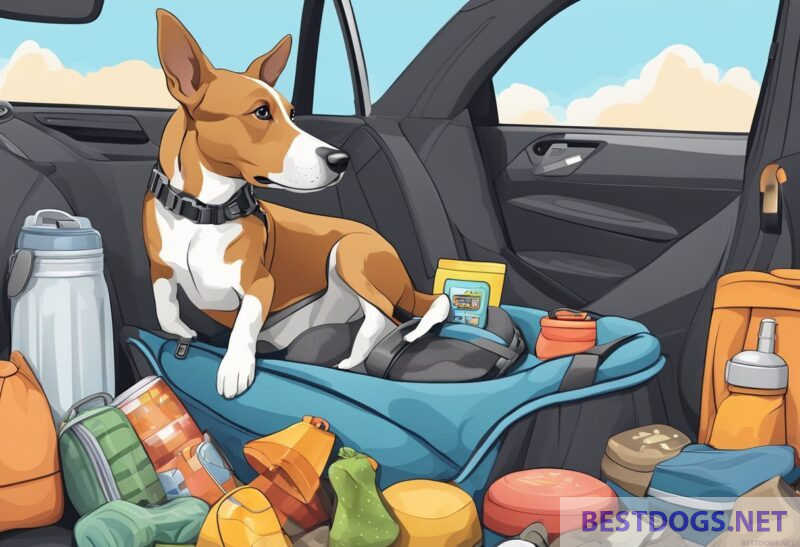
Handling Bathroom Breaks
Regular bathroom breaks are a must.
Plan stops every couple of hours to allow your dog to relieve themselves.
Rest stops are ideal, but any safe place for a quick stretch will suffice.
Always carry poop bags to clean up after your dog.
- Frequency: Every 2-3 hours
- Supplies: Poop bags for cleanup
Dealing with the temperature
Control the temperature: Dogs are sensitive to temperature fluctuations, so it is important to create a comfortable environment in the car.
Avoid leaving your dog alone in a hot car and use sun covers or window screens to prevent direct sunlight.
If the weather is cold, give your dog a warm blanket or dog coat to keep him cozy. Monitor the temperature in the car and adjust it accordingly to keep your dog comfortable.
Dealing with Anxiety and Carsickness
Many dogs experience anxiety or carsickness when traveling.
To reduce stress, familiar items like a favorite toy can make the space feel more comfortable.
If your dog is prone to carsickness, avoid feeding them large meals before the trip and consult with a vet for potential remedies.
- Comfort: Familiar items, toys
- Prevention: Consultation with a vet, controlled feeding
Consider the use of tranquilizers: If your dog is anxious or stressed during the car ride, consider using tranquilizers.
There are various products such as pheromone sprays, calming collars or natural supplements that can help your dog relax and make the journey more comfortable.
Talk to your veterinarian to determine the best option for your dog.
Advanced Travel Considerations
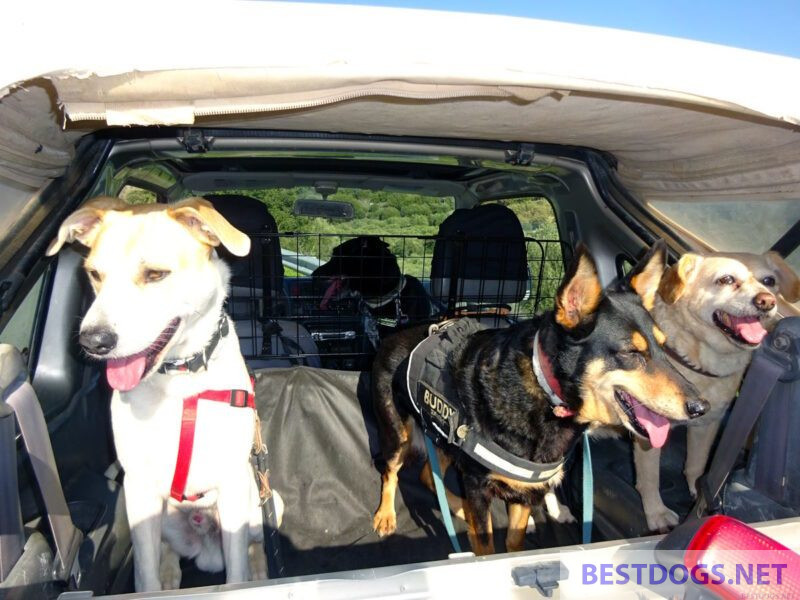
When taking a dog on a car journey, particularly for long distances, it’s essential to prepare for the unique set of challenges that may arise.
Ensuring that both the dog and the driver are comfortable and safe is paramount, from planning sufficient breaks to preparing for emergencies and adjusting to different travel modes.
Long-Distance Travel and Breaks
For longer trips, it’s crucial to map out your route to include regular stops, ideally every 2-3 hours, allowing your dog to stretch, hydrate, and relieve themselves.
This can prevent carsickness and reduce anxiety.
Equip your vehicle with a dog water bottle and plan to stop to feed your dog according to their regular meal schedule, to maintain their routine as much as possible.
Preparing for Emergencies
Emergencies can occur, thus being prepared is non-negotiable.
Always carry a first-aid kit, updated contact information, and a recent photo of your dog.
Consider a GPS tracker in case your dog becomes lost.
Keep the temperature inside your car regulated; never leave your dog unattended in conditions that are too hot or cold.
Ensure your pet has a health certification and a rabies shot, especially when crossing state lines or traveling internationally.
Tips for Different Modes of Travel
Aside from cars, those planning to travel by bus, fly with dogs, or take a cruise need to understand the specific regulations that apply.
When flying, check the airline’s pet policy and secure an approved carrier.
For bus travel, only some companies allow pets, so verify in advance.
When traveling on a cruise or ferry, you should make sure that the ship is pet-friendly.
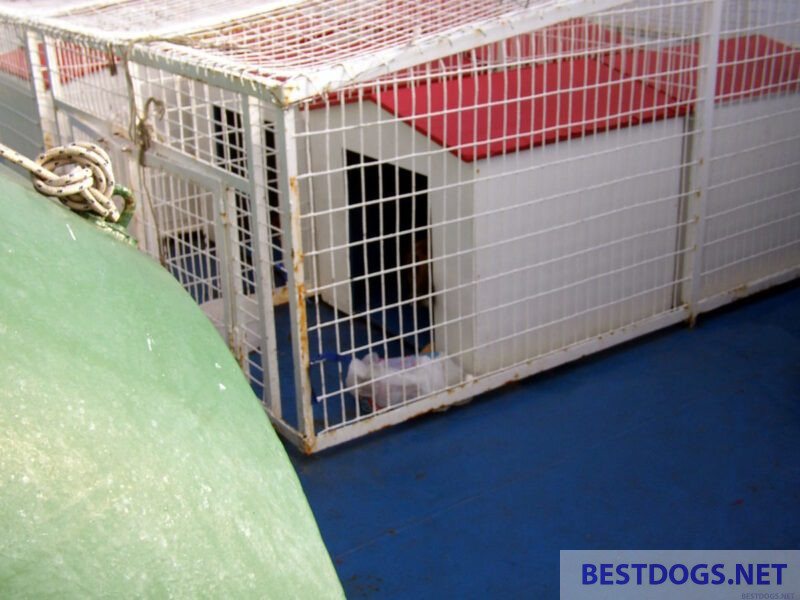
Always plan ahead to guarantee a smooth journey regardless of the mode of travel.
Post-Travel Dog Care
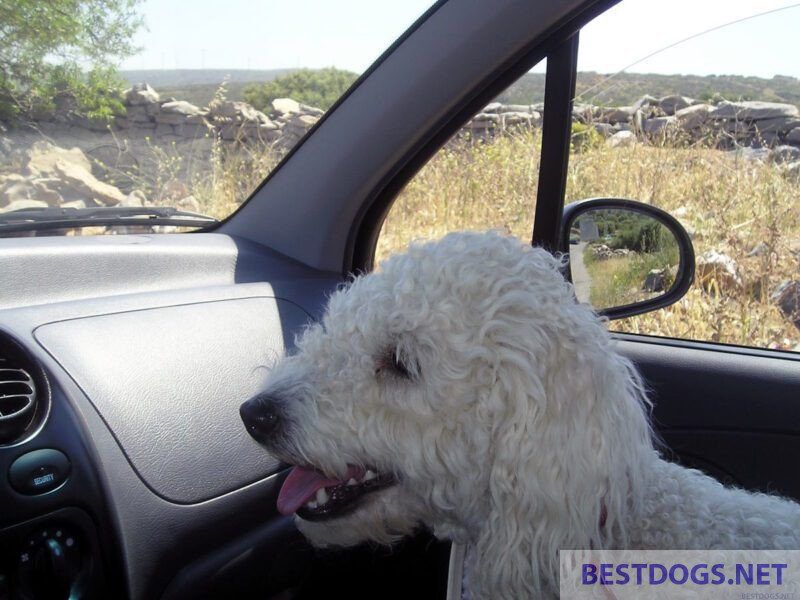
After a long car journey, ensuring your dog’s health and wellbeing is a top priority. Arriving at the destination means it’s time to help your pet recuperate and take care of the travel accessories used during the trip.
Post-Travel Checkup
Upon concluding your travel, a thorough post-travel checkup is essential to ensure your dog’s continued health and comfort.
One should check for any signs of stress or discomfort that might have arisen during the trip.
A veterinarian should be consulted if there are any concerns about the dog’s well-being after a long trip.
Making sure your dog stays comfortable after the journey can aid in their recovery from the stress of traveling.
- Health: Look for changes in behavior or appetite that might indicate discomfort.
- Safety: Ensure their identification tags are secure in case they try to wander after arriving.
Cleaning and Storing Travel Gear
Proper cleaning and storage of travel gear not only prolongs the life of the items but also maintains a hygienic environment for your pet.
- Cleaning:
- Toys and leashes: Wash thoroughly with pet-safe cleaners.
- Straps and safety gear: Inspect for wear and tear, clean accordingly.
- Storing:
- Keep travel gear in an accessible but secure location for future use.
- Ensure items like crates and carriers are dry before storage to prevent mold and mildew.
Frequently Asked Questions
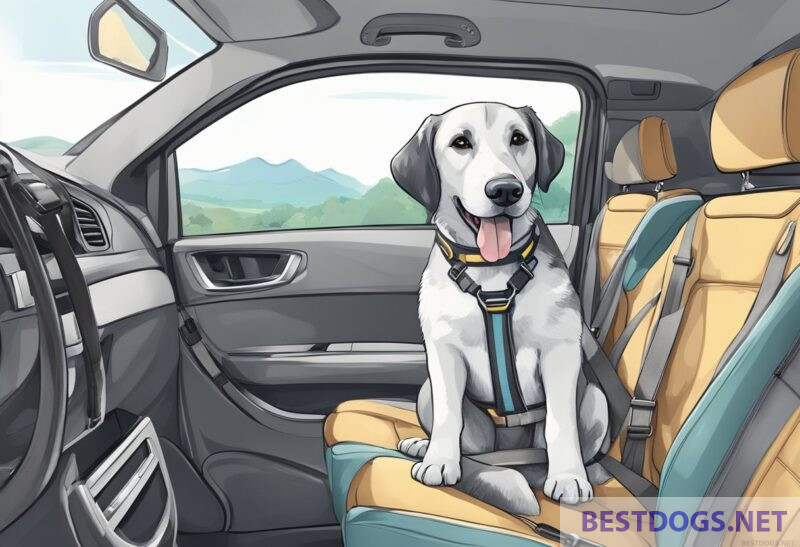
Travelling with dogs by car can be enjoyable and safe when best practices are followed. This FAQ section addresses common concerns and provides concise guidance for pet owners.
What are the best practices for car travel with dogs?
Best practices for car travel with dogs include ensuring adequate ventilation, using travel-rated crates or carriers, and providing them with light meals prior to travel.
It is also crucial to keep them hydrated and to make frequent stops for exercise and bathroom breaks.
Can Dogs Ride in Rental Cars?
Many rental car companies allow dogs, but they typically require that vehicles be returned clean and free of pet hair.
It’s advisable to check with the rental company for their specific pet policies and whether additional fees apply.
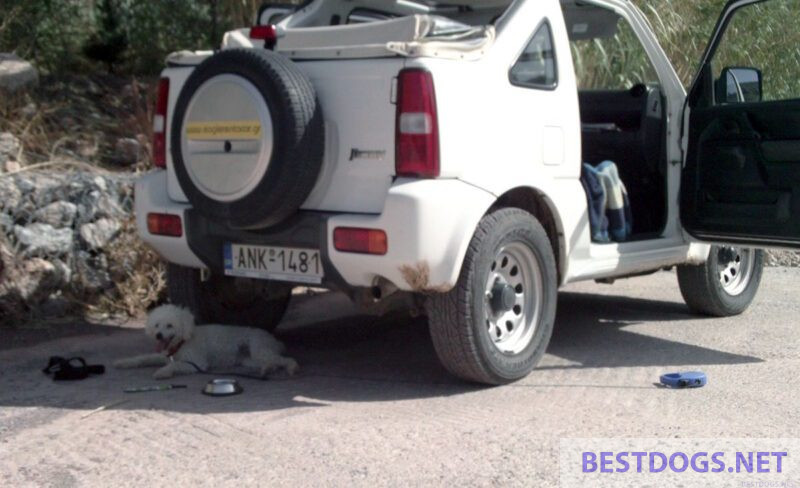
How can you ensure the safety of your dog during long car journeys?
To ensure your dog’s safety, they should be secured in a properly sized crate or harness.
The restraint system should prevent them from moving around freely and distracting the driver, while also protecting them in case of sudden stops.
What are effective strategies for keeping dogs calm while traveling in a car?
Strategies to keep dogs calm include bringing familiar items, such as blankets or toys, using pheromone sprays, and playing soft music.
Some dogs may benefit from a consult with a veterinarian regarding travel-related anxiety.
How often should you take breaks when traveling with a dog by car?
Frequent breaks are recommended every 2 to 3 hours to allow dogs to stretch, relieve themselves, and drink water.
For puppies or active breeds, more frequent stops may be necessary.
What essential accessories should you bring for dog car travel?
Essential accessories for dog car travel include a secure and comfortable restraint system, water and food bowls, a leash, waste bags, and a first-aid kit.
Also bring any necessary medications and a familiar blanket or toy to help ease stress.
What are the considerations for traveling with a large dog in a car?
For large dogs, it is important to have a spacious and secure crate. Ensure ample room to lie down and turn around in the vehicle. Identify accessible outdoor spaces for breaks. An SUV or hatchback may be more appropriate for larger breeds to travel comfortably.
What should I bear in mind when traveling by car with a dog and children?
If you are traveling with a child and a dog, you should never leave them alone in the car. As a general rule, children and dogs must never be left together without supervision, as something could happen due to a chain of unfortunate circumstances.
This even applies to well-socialized dogs, as the child will never be accepted as the leader of the pack and therefore the authority.
Conversely, children can unintentionally cause harm to the dog or provoke an aggressive reaction from the animal due to carelessness or a lack of the necessary foresight. And especially in the car, there is hardly any way to avoid the situation.
What should I bear in mind if my car breaks down with a dog inside?
Despite the fright, the dog must not be left unattended and unsecured in the vehicle. The dog must realize that despite the problems with the car, the owner is keeping a ‘cool head’ and has everything under control.
Dogs sense signs of insecurity or stress and then make their own decisions, which are even more detrimental to the situation.


